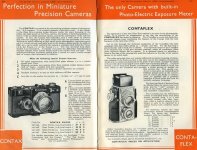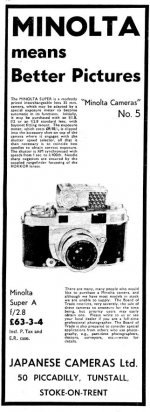LeicaTom
Watch that step!
John Robertson said:Leica cameras and parts for M O D use also came into Britain via the "Shetland Bus"
This was a clandestine ferry service between Norway and Scotland run throughout the war using trawlers crewed by some very brave men.
"Shetland Bus"? hummmm that sounds very interesting, the British S.O.E. and American O.S.S. had some very daring clandestine operations going on during the war, I knew of the Swedish/RAF/MOD/Ball Bearings deal, but not about this anywhere online I can read about this operation?
I figure that few if any Leica IIIC `s even got to the USA for sale before 1941, as travel was very limited for American`s to Germany then, mostly only diplomatic services and handful of some news people, were left over there after September 1939
Mostly everone here had to wait till after 1945 to get their hands on the new Leica, American servicemembers were the first to be able to do so in September 1945 at the Post Exchange in Frankfurt
Last edited:



